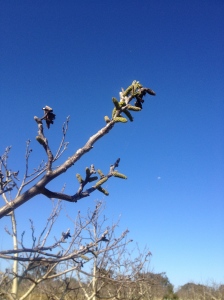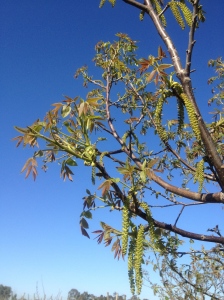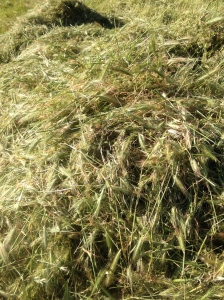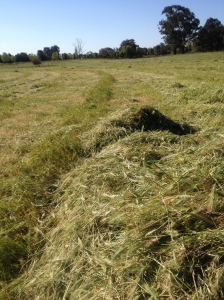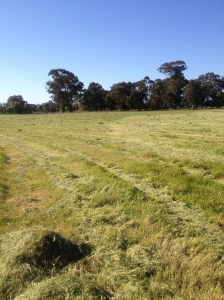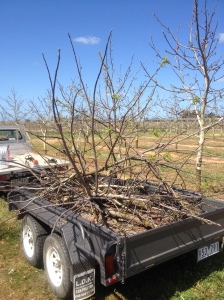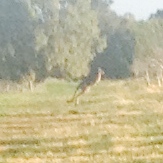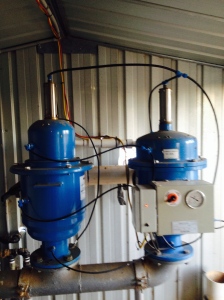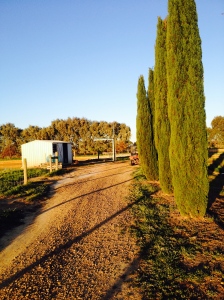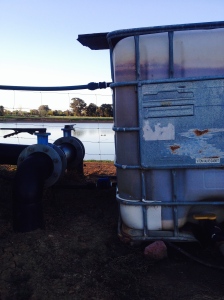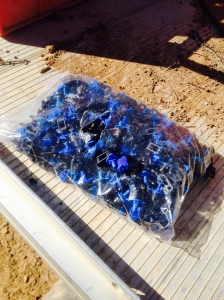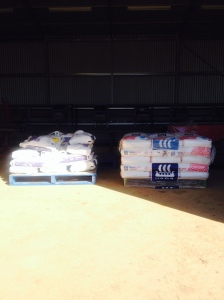Walnut trees are waking. There are catkins. Soon leaves will appear. Once the leaves form into a ‘praying ‘ form, its time to spray copper to curb blight. I went looking for the sprayer yesterday to check it was functioning. It has sat at the back of the shed since last December. I found it wedged behind the harvester, the shaker, the lawn mower, a bin trailer and the fan for the new drying bins.
I think it is important to risk boring you with the tedious tale of how I overcame these obstacles.
All of these barriers to the simple extraction of the sprayers should not have posed a problem. That is not my experience of commencing any new task – one step forward and five steps back.
The shaker and the forklift to shift the fan had flat batteries. The shaker had lain dormant for months and the voltage has seeped away. The forklift reflects a more insidious concern which it shares with our tractor. If I leave the key in the ignition overnight in the off position, as is normal practice in the country, though we do lock doors and windows at night, but not in the day, the battery flattens. A flat battery is a minor irritant now that we have the superconductor jumper leads from our local legitimate auto-electrician ‘Hotwire’.
With the forklift jump started I moved the fan. The bin trailer, I attached the rusty chain, bought at the local farmers’ market recently, to the forklift and dragged it away for later attention.
I used the jumper leads on the shaker. Its cummins engine growled to life. A joy stick lifts the grappling arm into the air. Forward and reverse is a see-saw accelerator. Left down is forward: right down back. Or is it? In a tight shed, the difference matters. I reversed it out and out of the way.
That left the harvester obstructing the sprayer by millimetres. Rather than attempting to squeeze by, I took the safe option. Moving the harvester requires attaching a very heavy metal collar to the lifting forks at the back of the tractors. That done, the collar must be lined up with the linkage of the harvester, by gently reversing the tractor and a bolt dropped into place at the appropriate time. Its a two person job. But pulling the harvester out of the shed I noted that the front wheels did not always clear the undulating ground. Correcting that could wait till I finished with the sprayer.
The sprayer was now accessible, but the tractor still had the collar in place behind. Rather than disconnecting it from the harvester, I tried delinking it from the tractor. I would need to come back for the harvester and put it back in the shed, so leaving the collar with it made sense. The process proved simple. Now, to move the sprayer requires the connection of a tow-bar to the tractor. The mechanical link was established, the jockey wheel raised and the electronic wiring connected. The sprayer was pulled clear of the shed and the PTO engaged. When the switches on the control box were flicked on, fine spray shot from each of the nozzles at the rear of the sprayer. Success. I returned the sprayer to an empty shed and reversed into its own bay, not to be blocked during its months of use till December.
Running the shaker’s engine for thirty minutes had recharged the battery. It took its place at the back of the shed, not needed till April next year.
The harvester posed two problems. I could ignore one but chose to not. I needed to adjust the tractor’s lifting forks so that the front wheels of the harvester would clear the ground easily. The mechanisms on the threaded supporting arms of the forks exhibited revered Japanese asymmetry. One could be adjusted easily. The other required the removal of a bolt distally. I tried to calculate if shortening or lengthening the arm would produce the desired result, knowing that once the collar was connected to the harvester, adjustment would prove difficult, especially the distal adjustment on the left arm. I chose lengthening and reconnected the collar to the tractor with difficulty. Needless to say, I had made the wrong decision. The arm needed shortening. The right arm was easy. I could not now access the distal bolt on the left arm as it occluded by the collar. There was a proximal bolt, untouched in years, moderately rusted, that eventually agreed. Shortening did the job by centimetres.
Next, I removed the flat tyre on bin trailer, took it to the repairer; and now, today, I am off to collect it before the AFL Grand-Final between Sydney and Hawthorn.

